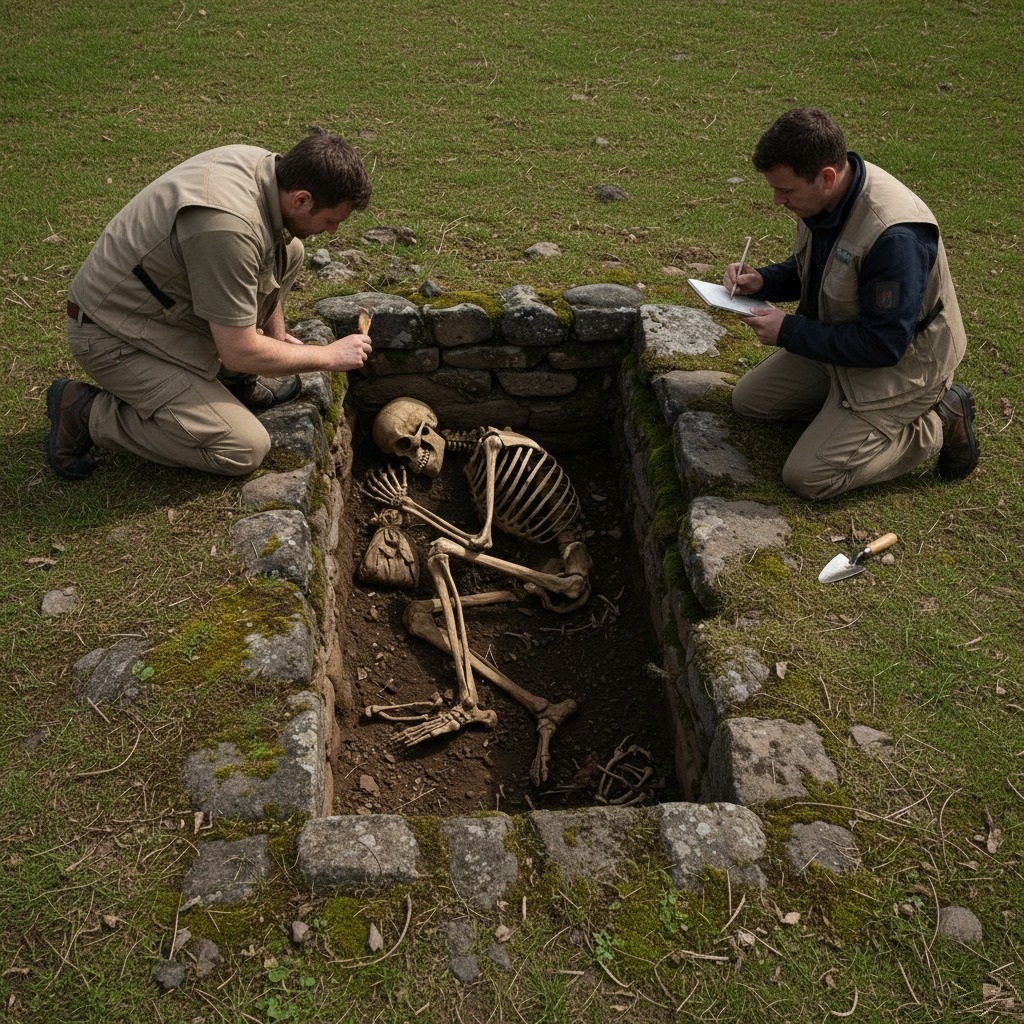Unearthing Ancient Secrets: A Roman-Era Burial Site in rural Kent

The chill of a late autumn morning bit at Dr. Evelyn Reed’s gloved hands as she knelt at the edge of the open grave. Around her, the quiet hum of the Kent countryside was occasionally broken by the distant bleating of sheep or the soft whisper of wind through barren hedgerows. Below her, meticulously cleared by weeks of painstaking excavation, lay the skeleton.
It wasn’t just any skeleton; this was the reason her team from the University of London had been granted permission to turn farmer Giles’s pasture into a grid of trenches and temporary shelters. This was a Roman-era burial, nestled deep within what was once a thriving agricultural outpost in ancient Britannia. And unlike many of the fragmented finds, this one was remarkably intact.
“See, Marcus? The positioning is almost devotional,” Evelyn murmured, gesturing with a tiny trowel towards the carefully curled bones. The individual lay on their side, seemingly in repose, with one arm bent, the hand gently touching the cranium. In the other hand, clutched close to the ribcage, was a small, organic-looking bag – perhaps leather, now merely a faint outline of decaying material, but its contents were tantalizingly intact.
Marcus Thorne, her junior colleague, meticulously sketched in his notepad, his brow furrowed in concentration. “And the orientation, Evelyn, still pointing roughly east. Consistent with a respectful burial, not just a hasty interment.” He glanced up, his eyes alight with the thrill of discovery. “And look at the stonework. Locally sourced ragstone, but cut with precision. This wasn’t a pauper.”
The grave itself was a rectangular cut into the earth, lined with precisely placed, moss-covered stones, forming a sturdy cist. This wasn’t typical Roman cremation, nor was it a simple earth grave. It suggested a person of some standing, or at least someone afforded significant care in their final resting place. The dark soil within the grave, now carefully brushed away from the bones, still held secrets. Fragments of pottery, faint traces of what might have been grave goods, hinted at a life lived almost two millennia ago.
Evelyn carefully, almost reverently, began to expose the faint remnants of the sack. “We’ll need to be incredibly delicate here, Marcus. If this contains anything metallic, or even seeds… it could tell us so much.” The air thickened with anticipation. What personal effects had this individual taken into the afterlife? A few coins for the ferryman, Charon? A treasured amulet? A small pouch of herbs or seeds, connecting them to their livelihood or beliefs?
The sun, now higher in the sky, cast longer shadows across the dig site. For Evelyn and Marcus, the cold and the long hours melted away. In this quiet corner of rural Kent, they weren’t just uncovering bones; they were touching history. They were piecing together a story – a life, a belief system, a moment in time – from the silent testimony of a forgotten Roman citizen, whose secrets had waited patiently beneath the earth for centuries, finally ready to be unearthed.
